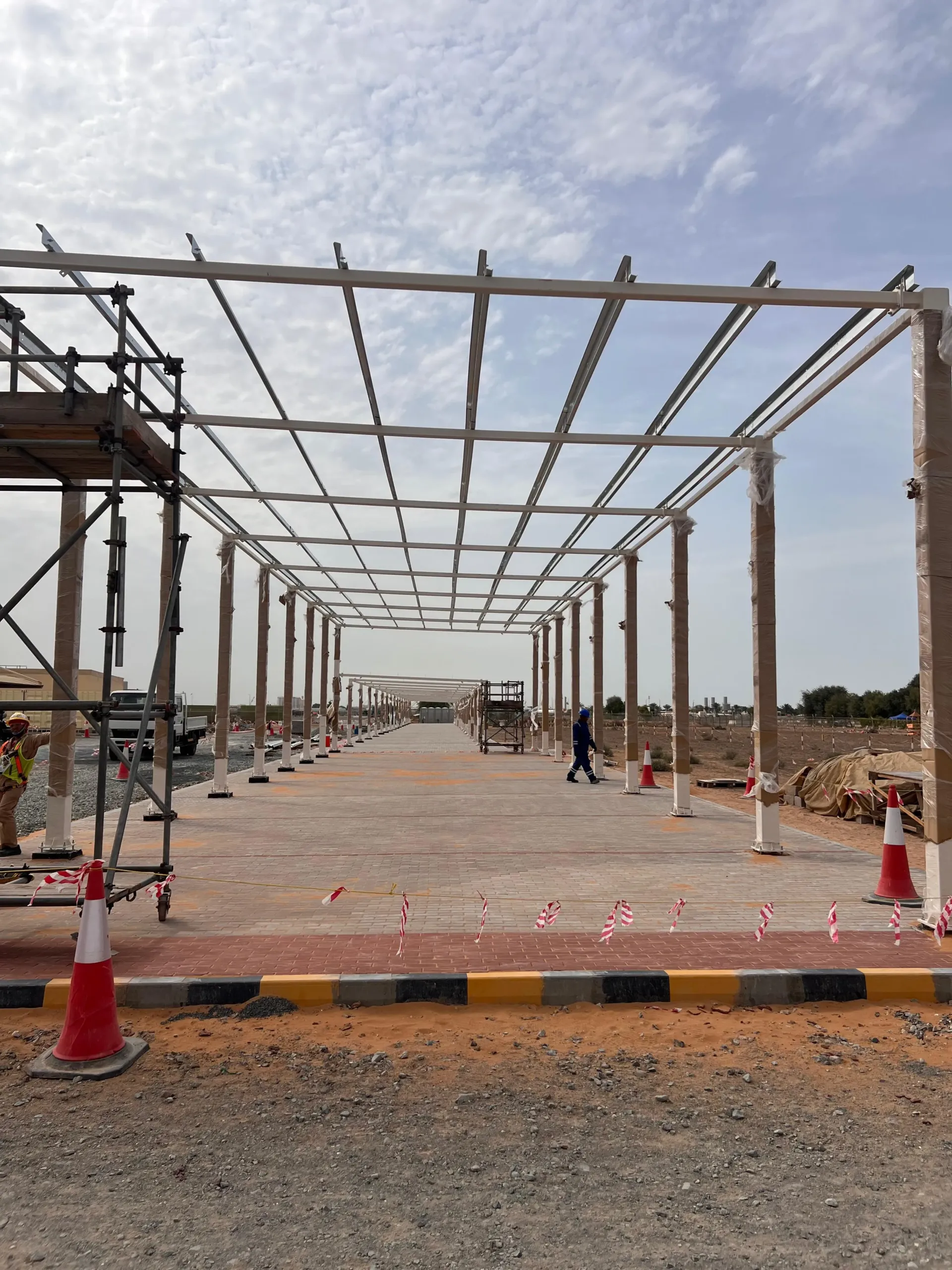Ever looked at a massive warehouse in Jebel Ali or Riyadh and wondered, “Why choose steel over concrete?” In the Gulf’s harsh climate and fast-paced markets, picking the right building material is critical. Let’s break down the pros and cons of steel structures vs concrete warehouses—and help you decide what fits your project best.
Why Steel Structures Dominate in the GCC (UAE & KSA)
- High strength-to-weight ratio: Steel enables wide-span bays without interior columns, ideal for large Gulf warehouses needing flexible layouts.
- Lightweight & prefab: Steel structures are typically pre-engineered and pre-fabricated, speeding up assembly and reducing labor costs—crucial in the fast-moving GCC market.
- Durability in desert conditions: Steel withstands sandstorms, desert heat, and strong windsfar better than many alternatives.
Why Concrete Warehouses Still Matter
Concrete offers:
- Superior fire resistance— thick walls hold flames back during emergencies.
- Thermal mass & insulation— stable internal temperatures for cold storage, food distribution, and pharma products.
- Long-lasting durability— ideal for permanent facilities storing sensitive or flammable goods.
However, concrete comes with longer build times (weeks to months), heavier foundations, and higher material and labor costs.
Steel vs. Concrete: Quick Comparison Table
| Feature | Steel Structures | Concrete Warehouses |
|---|---|---|
| Build Time | Weeks (prefabricated) | Months (pouring & curing) |
| Foundation Cost | Lighter, cost-effective | Heavy, expensive |
| Span & Flexibility | Large open bays, flexible layout | Multiple columns, limited span |
| Durability & Fire Safety | Good with coatings & insulation | Excellent fire resistance |
| Maintenance | Low (no mold or termite issues) | Moderate (cracks, spalling risk) |
| Environmental Impact | Recyclable, less waste | Higher carbon footprint |
When to Choose Concrete Over Steel
If your warehouse needs high fire resistance (e.g., flammable liquids), stable temperature control (cold storage or pharma), or a permanent facility, concrete is often the safer bet.
For fast-track projects, future expansion, or large-scale bays, steel is the go-to material in the GCC.
Rvoltech’s Steel Solutions: Best of Both Worlds
At Rvoltech, we engineer pre-engineered steel buildings that balance strength, durability, and smart design. Our solutions include:
- Portal frames tailored for GCC climates
- Insulated sandwich panels for thermal comfort and fire safety
- Fast, flexible builds that reduce downtime and cost
Explore our Steel Structures and Metal Building System pages for real-world examples.
5 Tips to Choose the Right Warehouse Build Material
- Define your storage needs— flammable, perishable, or general goods?
- Plan for expansion— steel offers easier scalability.
- Check your timeline— steel buildings deliver faster.
- Calculate total cost— include foundation, labor, and maintenance.
Consult experts — Rvoltech can help you navigate insulation, fire codes, and local regulations.
Myth-Busting: Does Steel Melt in Fire?
Contrary to common belief, steel frames coated and insulated properly withstand fire for 60+ minutes. Unlike concrete, steel frames don’t crack or spall under heat. So you get speed without compromising safety.
What Works Best in Dubai and the GCC?
- For fast, scalable, and cost-effective warehouses, steel is typically preferred.
- For high fire safety or temperature-sensitive storage, concrete can be essential.
- Consider a hybrid design—steel frame with concrete core—for the best of both worlds.
Ready to Build Your Warehouse?
At Rvoltech, we’ve designed and delivered steel, concrete, and hybrid warehouses across the GCC. Let’s help you find the perfect fit for your project’s speed, budget, and durability needs.
📞 Contact our team today for a free, tailored warehouse quote.
Because in the GCC, time and quality matter—and so do trusted experts.

